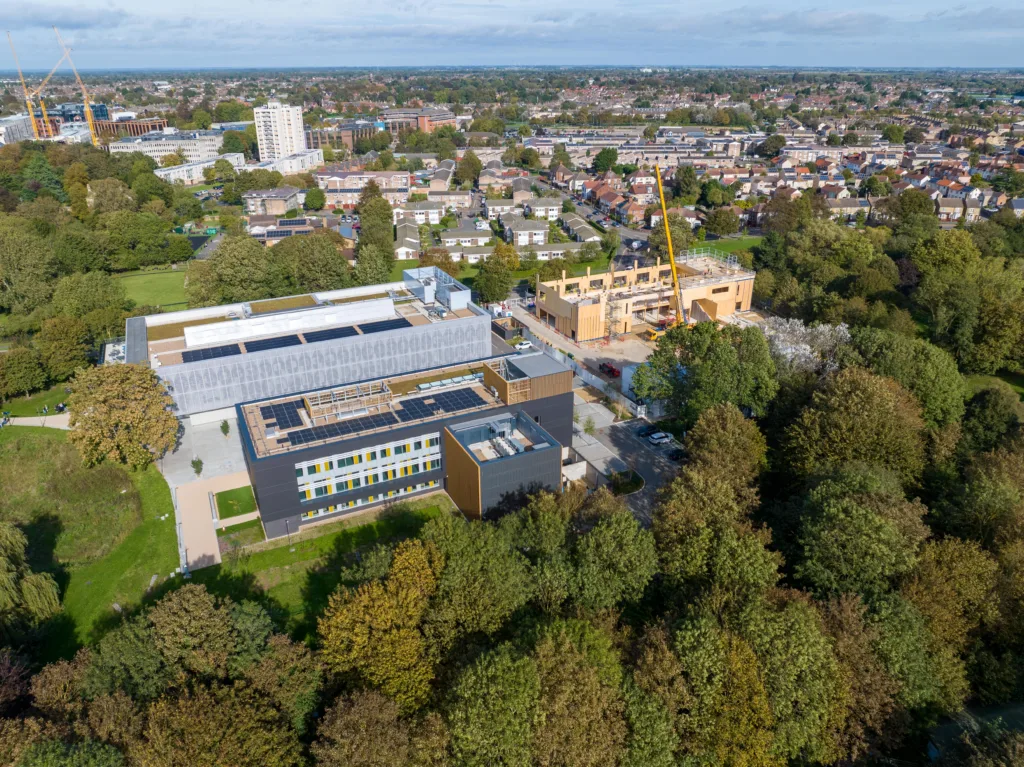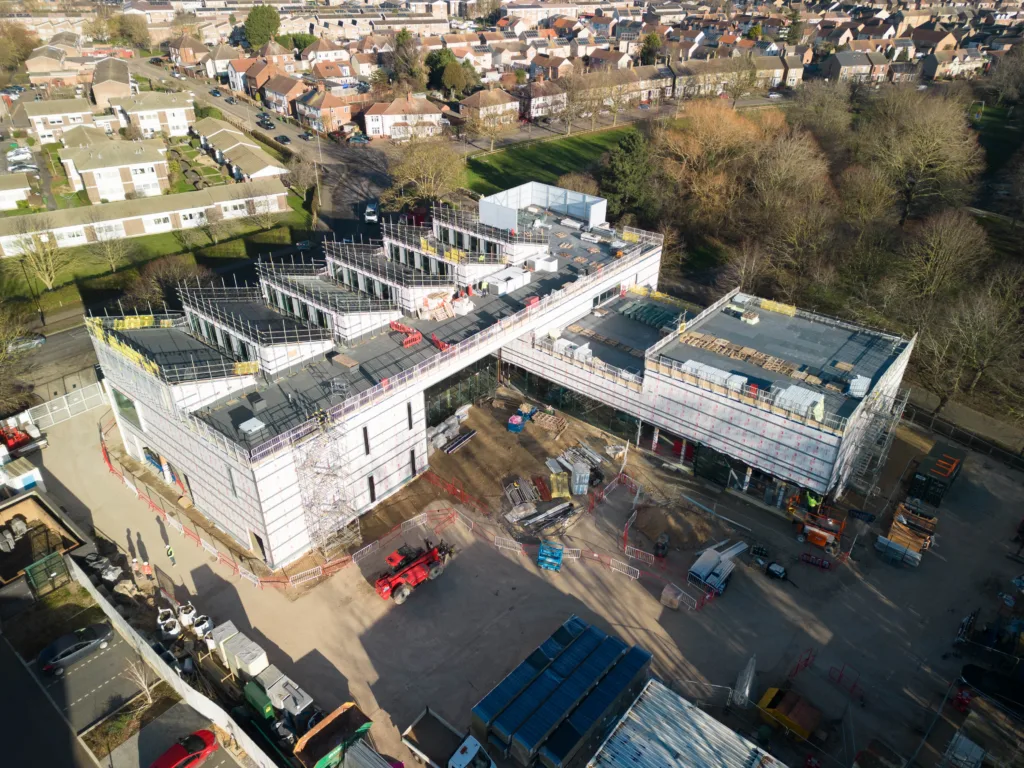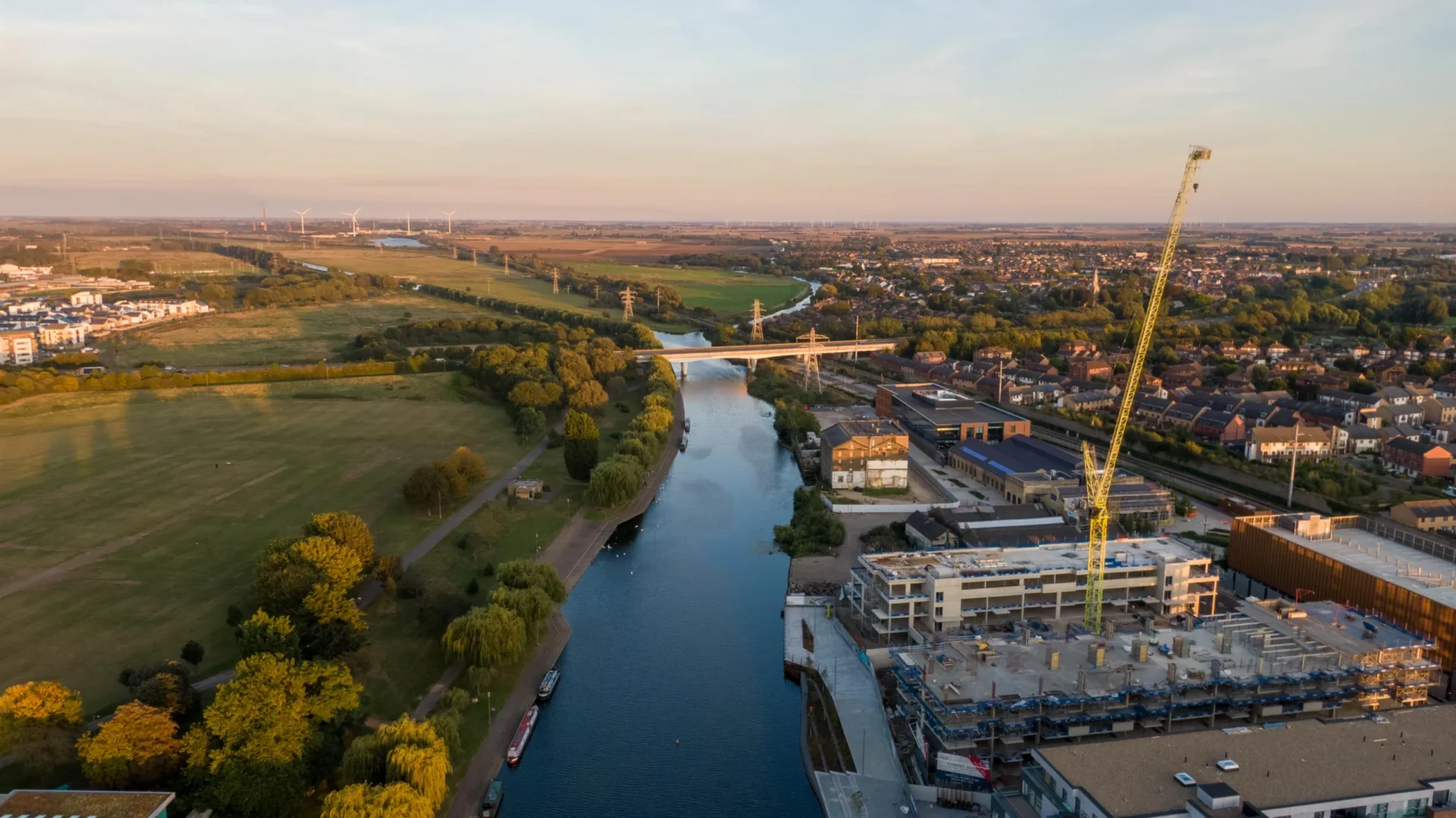Peterborough’s economic growth is set to outpace the rest of the East of England over the next three years. Key highlights of a new report show: 1: Peterborough forecast to see Gross Value Added (GVA) growth of 1.9% a year between 2024 and 2027, matching the national growth rate (1.9%) and outpacing the East of England as a whole (1.8%).
2: Cambridge (1.8%) and Bedford (1.7%) will be the region’s second and third fastest-growing local economies
3: East of England GVA will grow more slowly than the UK average, but the region’s annual employment growth (1.4%) will outpace the nationwide rate (1.1%)
4: Economic momentum is set to return to all parts of the UK between 2024 and 2027, but London and the South East are forecast to see faster GVA growth than the UK average
Peterborough is set to be the fastest growing local economy in the East of England between 2024 and 2027, even as the UK’s regional growth gap continues to widen according to the latest EY Regional Economic Forecast.
Between 2024 and 2027, Peterborough’s economy is expected to grow by 1.9% per year on average, when measured by Gross Value Added (GVA).
The East of England region is forecast to see annual average growth of 1.8% over the same period, while the UK overall is expected to see 1.9% growth.
Meanwhile Cambridge is forecast to be the region’s second-fastest growing economy over the next three years with 1.8% average annual GVA growth, followed by Bedford with 1.7%.
Boston (1.4%) is forecast to be the region’s slowest-growing town.
Manufacturing (0.2%), Human health and social work (0.2%), Public administration (0.13%) and Education (0.08%) are all sectors forecast to see GVA growth above the UK average between 2024-27, further aiding the region’s economic and employment growth.

While the East of England is expected to see slower GVA growth than the UK average over the next three years, the region is forecast to see a faster rate of jobs growth than the nationwide average.
Employment growth in the East of England is predicted to grow by 1.2% per year between 2024 and 2027, compared to 1.1% for the wider UK. Cambridge is expected to exceed both the national and regional average and see employment grow by 1.4% annually between 2024 and 2027.
Stuart Wilkinson, Managing Partner at EY in the East of England, said: “The East of England is home to many businesses and sectors including high growth, high value knowledge-based sectors, such tech, professional services, and life sciences, meaning the region is well-placed to feel the benefits of the UK’s return to economic growth over the next few years.
“Cities such as Peterborough and Cambridge will be the driving forces behind the region’s economic growth, by making the most of their sector strengths.
“This will also be key for towns such as Boston, which is forecast to see GVA growth below the UK average. Businesses will need to prioritise attracting and developing skilled talent in order to continue making the East of England a desirable place to live and work.
“We know the availability of skilled personnel is a real challenge to the region, so companies may need to think how they can train/retrain their workforce.”
Nationwide disparity in sector mix and economic inactivity set to persist.
Looking across the UK, lower inflation and the prospect of interest rate reductions will lay the foundations for a return to historical levels of growth between 2024 and 2027.

Amazon, Kingston Park, Peterborough. Picture by Terry Harris.
London and the South East are forecast to achieve annual GVA growth of 2.1% and 2% respectively, while the South West is expected to see 1.9% growth. Every other region is forecast to grow at a slower rate than the UK average.
EY says this can partly be attributed to the lower concentration of high value sectors in some parts of the UK.
For example, the professional services and information and communication sectors are expected to be among the fastest growing sectors for GVA between 2024 and 2027, with average annual growth rates of 2.1% and 1.9% respectively.
However, by 2027 the two sectors combined will comprise just 9.9% of all employment opportunities in the North East and 10% in Yorkshire and the Humberside, compared to 14% of employment opportunities across the UK, 16% in the South East and 23.1% in London.
There are also significant variations in labour market participation across different parts of the UK and there appears to be a correlation between lower growth and higher levels of economic inactivity.
Northern Ireland has the highest level of inactivity, at 25.7%, almost three percentage points higher than in any other region. The North West (22.9%), Wales (22%), the North East (20.7%) and the East Midlands (20.5%) also have relatively high levels of inactivity, compared to the UK average (18.3%).
The East of England’s economic inactivity is below the national average at 17.3%. However, the lowest rates of inactivity can be found in those regions expected to match or exceed the average UK economic growth rate over the next three years – the South West (14.7%), London (14.9%) and the South East (15.9%).

Above: Topping out of the third phase of ARU Peterborough. Tuesday 16 January 2024. Picture by Terry Harris.
The UK remains the only major Organisation for Economic Co-operation and Development (OECD) country where the labour market participation rate has not yet returned to the level it was pre-pandemic. In 2023 the economic inactivity rate across the UK was 18.3%, which is a rise from 17.5% in 2019.
Peter Arnold, EY UK Chief Economist, said: “The UK entered a technical recession in the latter half of 2023 and growth for the year remained tepid as high inflation and rising interest rates squeezed consumer spending power and business performance.
“In terms of regional performance, average household income was a key differentiator as cost-of-living pressures were felt most by the lower paid. There were outright declines in economic activity in Wales, Northern Ireland, and Yorkshire & the Humber where average incomes tended to be lower.
“Looking ahead, while growth is expected to remain subdued for much of 2024, there are signs that economic momentum should start to build towards the end of this year. Inflation should fall to the Bank of England’s 2% target by the Spring and, alongside declining energy prices, this should provide scope for future interest rate cuts, which will ease pressure on households and businesses.
“The UK’s economic prospects for 2025 and 2026 appear even brighter, but this return to moderate growth is unlikely to be balanced across the country.”























